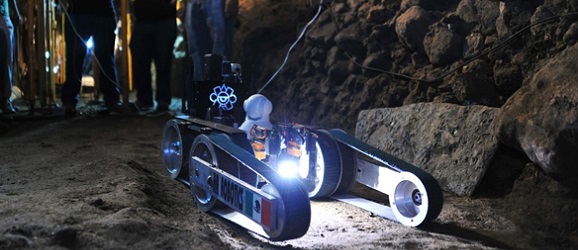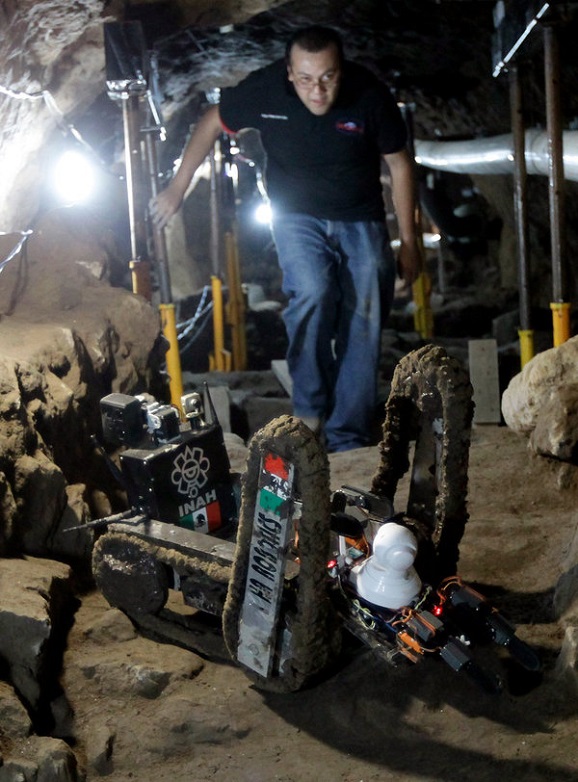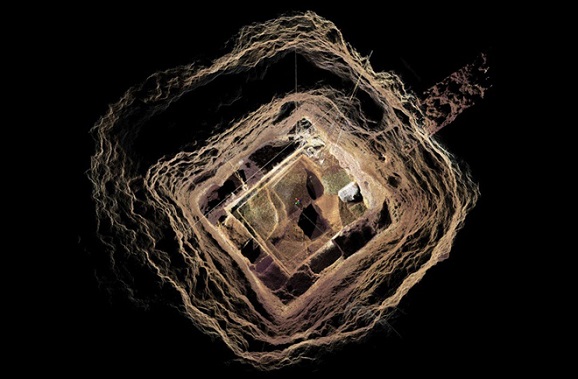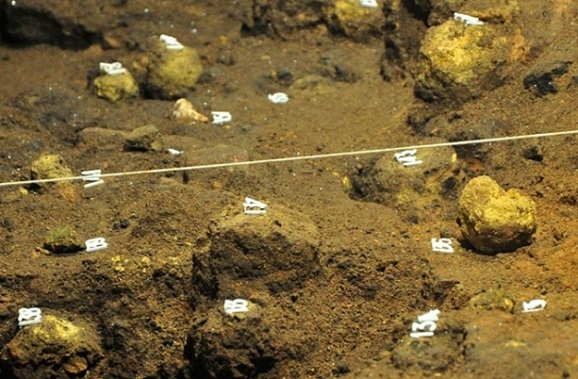Robot Finds Strange Spheres In Chambers Beneath Ancient Mexican Temple
This article is more than 2 years old
 The ancient city of Teotihuacan, located about 30 miles northeast of Mexico City, is one of the most intriguing places on Earth, as far as its history goes. Established circa 100 B.C.E., it was once one of the greatest cities in the world, with a population that reached around 125,000 people at its peak, and a landscape full of pyramids. In the 1970s and 1980s, a tunnel system was found beneath the Temple of Quetzalocaot — or the Temple of the Feathered Serpent, for the more exotic among you all — and while it was partially explored and mapped out in 2003, its most recent developments have been the most amazing yet.
The ancient city of Teotihuacan, located about 30 miles northeast of Mexico City, is one of the most intriguing places on Earth, as far as its history goes. Established circa 100 B.C.E., it was once one of the greatest cities in the world, with a population that reached around 125,000 people at its peak, and a landscape full of pyramids. In the 1970s and 1980s, a tunnel system was found beneath the Temple of Quetzalocaot — or the Temple of the Feathered Serpent, for the more exotic among you all — and while it was partially explored and mapped out in 2003, its most recent developments have been the most amazing yet.
And it’s all thanks to a Smallish Freakin’ Robot named Tialoc II-TC, named after Mexico’s god of rain. The three-foot-long, 77-pound Tialoc-II entered the tunnel last week, rolling through sludge and mud to reach the end of the tunnel, where archaeologists expected to find another chamber, similar to the ones at the mouth of the tunnel. Only the robot found three of them, thought to be burial chambers, as all these things generally are.

It’s worth noting that the central chambers were blocked off early on and then opened again nearly 1,800 years ago, where something of the utmost importance to the culture was desposited, and then the chamber was blocked off once more, never to be opened again. Until some point in the future, that is. (Maybe this guy could be used.)

The second major discovery the Tialoc-II made was in locating a bunch of spheres in chambers near the front of the tunnel. They also found things like wooden masks and pottery all from around 100 C.E. But the spheres are slightly more mysterious.
“This material is formed by the oxidation of pyrite, which is a metallic ore,” Said Sergio Gómez Chávez, the team leader behind the excavation. “It means that in pre-hispanic times they appeared as if they were metallic spheres. There are hundreds of these in the south chamber.” The walls and ceilings of both chambers also had pyrite, magnetite, and hematite powder covering them, causing Gómez Chávez to “believe that high-ranking people, priests or even rulers went down into the tunnels to perform rituals.” So long as they don’t find anything monstrous, as I don’t think the Tialoc-II is big enough to handle the job.

Even though the robot is actually the one doing the finding, it’s always good to see robo-human cooperation, rather than the deadly alternative. Check out a brief video showcasing the robot’s work below.












